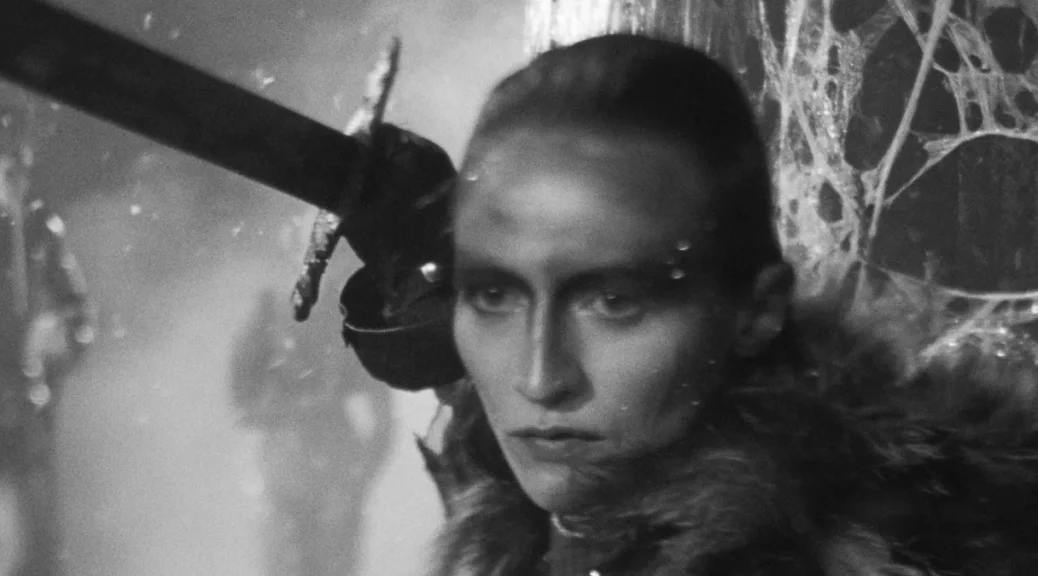She Is Conann
by Hope Madden
What did I just watch?
It’s called She Is Conann, and it defies simple summarization.
French filmmaking provocateur Bertrand Mandico would like to take you on a strange journey. Conann, played throughout this experimental epic by six different actors (Claire Duburcq, Christa Théret, Sandra Parfait, Agata Buzek, Nathalie Richard and Françoise Brion) is no ordinary barbarian. But is she the most barbaric of all barbarians? At her death, her life is recounted to the Queen of Hell to make that determination.
Who is telling the tale? Rainer, a dog man (played by a woman, Elina Löwensohn) who’d been Conann’s near-constant companion since her earliest days of barbarism. They are, ahem, close.
This weird fever dream is told mostly in black and white with filth and sparkles, which makes the seemingly random pops of giallo-esque color more striking. We meet Conann at 15 in what is closest to the barbarian concept of the Schwarzenegger series that gives Mandico’s film its name. All swords and mud and conquest, the stage is set for vengeance to grip the orphan’s mind and set her on a path to rule all.
But her first real foe turns out to be herself, as she is forever murdered when visited by the version of Conann from one decade hence. This allows Mandico to leapfrog around time, creating bizarre and intoxicatingly staged eras that mix queer iconography with punk and disco, then symbols of conquest from the Roman Empire to Nazi Germany.
Rainer is always there, flashing photos as both witness and artist, one of dozens of ways the film links art with consumerism, artist with consumption. (Indeed, eventually the link is quite literal.)
Easter eggs to Naked Lunch, Blade Runner and many more, while fun, also embellish each era’s aesthetic. The result is morbid and macabre, grotesque and cynical and of course, strangely beautiful.
She Is Conann drags a bit, feeling every second of its 105-minute running time. Some eras grow more tedious than others, but a fresh and entirely bizarre surprise is around every bend. This is not a film you leave thinking, Oh, I saw that coming. The result is more of a bewildering if absolutely entertaining WTF?




